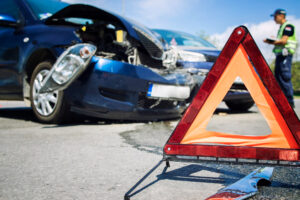Every driver has seen a roadside sign warning them that the section of the road that they are driving on is a high-risk accident zone. When a driver sees one of these signs, they should change their driving style and increase their awareness levels to be ready to respond to unexpected challenges.
Assess the situation to determine what makes that stretch of road dangerous and adapt your driving to account for this.
– eugene herbert, managing director – masterdrive
The managing director of MasterDrive, Eugene Herbert, explains areas that have high accident rates with warning signs of this, require changes to your driving to meet the situation. “It is up to you to assess the area and identify what makes that particular area high risk. Van Reenen’s Pass is one of South Africa’s more notorious high-risk areas because it is vulnerable to bad weather and a dangerous area for trucks to travel.
“In this instance drivers need to drive with more caution especially when weather conditions are bad and ensure they follow the instructions along the route that separate cars and trucks. Additionally, keep an eye out for vehicles that may swerve into oncoming traffic.”

There are a number of other conditions that can make a road into a high-risk area. “Concealed accesses, high traffic volumes, a blind rise, animals that may wander into the road, high incidents of negligent driving, low visibility, roads prone to potholes and weather conditions are just a few challenges that can make an area high risk.
“Assess the situation to determine what makes that stretch of road dangerous and adapt your driving to account for this. Even if you cannot immediately identify the risk, be just as cautious as what you would if you did know,” says Herbert.

Examples of driving styles that you can ensure you are following include:
- Slow down so that you have extra time to react should a car suddenly enter the road from a side road unexpectedly or to react to many other hazards
- Increase your following distances to give yourself additional time and space to react to the actions of cars ahead of you or to concealed obstacles
- Look 12 seconds ahead as you drive so that any potentially dangerous situations do not catch you unaware
- Watch the reactions of drivers in front of you. Additional time and space gives you the opportunity to notice if all the cars ahead are veering to one side of the road to avoid something like a pothole and allows you to react to the hazard timeously and carefully
- Always drive with your headlights on to increase your visibility to other vehicles or pedestrians
- Be prepared for slippery roads by paying attention to your surroundings and learning what to do should you lose control of your vehicle
- Do not drive fatigued as it can make something as simple as a straight road extremely dangerous because your ability to pay attention and react quickly, among other issues, is affected
- Be patient and courteous in heavy traffic. Losing your cool or preventing others from entering a lane creates dangerous as well as volatile situations
Roads where you are at a higher risk of crashing are not unusual, making preparation for it essential. “Follow the principles of defensive driving on these roads and be ready for any challenge you may encounter to ensure you emerge from these areas as safely as possible,” advises Herbert.






